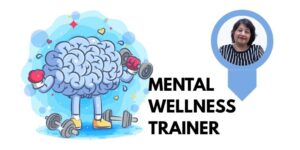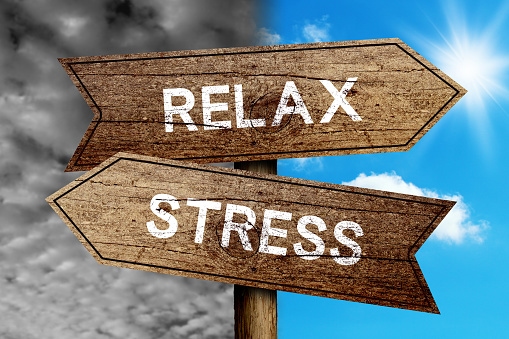“ADHD isn’t a flaw; it’s a unique wiring that sparks brilliance, creativity, and resilience in a world that may struggle to keep up with its vibrant rhythm.”
Attention Deficit Hyperactivity Disorder (ADHD) is a condition that often results in forgetfulness, impulsivity, and difficulty focusing. Despite these challenges, it’s essential to recognise that individuals with ADHD also possess many strengths and creative abilities.
People with ADHD are often highly innovative and capable of thinking outside the box. They are skilled at recognising connections and finding solutions others may not see, making them valuable in art, design, and technology.
“Often, we only acknowledge ADHD as a condition and forget that every adult who may be diagnosed with ADHD has their own unique strengths. Though I have not yet gone for a professional assessment, I have a strong feeling that I may have ADHD. Now that I accept my strengths and weaknesses, many of the anxieties I experienced before knowing that I may have ADHD have disappeared to a large extent.
As an illustration, I face criticism from my family due to my disorganised nature. However, I’ve come to understand that, despite this aspect, my creativity thrives. Embracing my unique wiring, I’ve learned to appreciate my strengths and prioritise working with them rather than conforming to others’ expectations. My wiring is unique, and it’s essential for me to leverage my strengths instead of conforming to the expectations others may have for me.
ADHD adults are wired differently, embracing a unique perspective that dances to the beat of their own brilliance.
In this blog, I would like to talk about ADHD not only as a mental disorder but also, at its best, allowing people to be creative. Some scholars suggest that traits of ADHD, such as hyperfocus, restlessness, and curiosity, may align with characteristics exhibited by historical figures like Leonardo da Vinci, Thomas Edison, and Virginia Woolf.
What is ADHD?
ADHD is a condition that affects the development of the nervous system and is characterised by persistent patterns of inattention, hyperactivity, and impulsivity. ADHD is a condition caused by a combination of genetic, neurological, and environmental factors. It is usually diagnosed in childhood but can persist into adolescence and adulthood.
Signs and Symptoms of ADHD:
ADHD symptoms can be broadly divided into two main groups: inattention and hyperactivity/impulsivity. The third group will consist of both inattention and hyperactivity/impulsivity.
ADHD predominantly inattentive presentation
- Inattentive to Details or Prone to Careless Mistakes
- Struggles to Maintain Attention
- Appears Inattentive or Unresponsive
- Faces Challenges Following Instructions Through
- Struggles with Organization
- Aversion to Tasks Requiring Prolonged Mental Effort
- Tends to Misplace Items
- Easily Distracted
- Forgetfulness in Daily Activities
ADHD predominantly hyperactive-impulsive presentation
- Fidgets with hands or feet or restlessly shifts in the chair.
- Struggles to Stay Seated
- Excessive Running or Climbing in Children; Profound Restlessness in Adults
- Finds it Challenging to Engage in Activities Quietly
- Talks Excessively
- Blurts out Answers Before Questions are Finished
- Impatience with Waiting or Taking Turns
- Tends to Interrupt or Intrude Upon Others
ADHD combined presentation
- The individual meets the criteria for both inattention and hyperactive-impulsive ADHD presentations.
How many readers can identify with the above as their predominant traits? Both hyperactive and impulsive, as well as inattentive presentations, describe me. Due to the constant reminders about them and the way they became my internal struggles and shame, I can identify with them.
ADHD tendencies can indirectly affect our personal relationships, making them more challenging.
Is ADHD a Gift or a Disorder?
ADHD is like a puzzling label – sometimes it brings good things, and sometimes it causes problems.
Though ADHD may bring challenges, it’s crucial to acknowledge the strengths and creative abilities that often accompany this condition. People with ADHD often view the world uniquely, and their minds operate in a manner that fosters innovative and imaginative ideas. By creating strategies to handle their symptoms, individuals with ADHD can direct their creativity towards meaningful and fulfilling pursuits.
Adults with ADHD can have their own challenges and strengths.
We would like to share an interesting video from @TEDxYouth with you. Here is the link for it (https://www.youtube.com/watch?v=_qtpmi4yzSs)
On the one hand, being hyper-focused can help us be creative, and on the other hand, it can also lead to addictive behaviours like video gaming, intrusive obsessive thoughts, etc.
An ADHD person can be
- enthusiastic
- risk taker
- visionary
- able to see the big picture
- imaginative
- creative
- problem solver
An ADHD person can also be
- hyperactive
- someone who acts without Thinking and impulsively
- fixated
- addicted (like gaming)
- lacking focus
- someone who has difficulty with small details
- or someone who is too focused on Details
- easily Distracted
- aggressive or defiant or finding difficulty following rules.
How is ADHD Treated?
My question to you or your loved ones will be identifying which spect you want to treat. Personally, for me, time management and discipline were essential areas to learn. I know clients who prefer to work on their focus. Medications, such as methylphenidate and amphetamines, can be used to improve attention and reduce hyperactivity.
Psychotherapy for ADHD
I believe counselling helps with a variety of interventions needed to lead a mentally healthy lifestyle. For example, I still struggle with the negative belief, “I am not good enough”. This belief was deeply rooted in me as I was not as good in my studies as my other siblings. I was often criticised for my overly active imagination, being creative, and not focusing on my studies. With therapy, I realised I am OK as I am. I can be proud of my achievements and don’t need to feel guilty or ashamed of who I am. I can appreciate my strengths and accept my limitations. Therapies like cognitive behaviour therapy can help learn time management.
If you are ready to let go of the box that is encompassing you with negative beliefs about yourself that make you think “I am not OK”, like:
- I am a troublemaker,
- I do not belong,
- I am out of place,
- I am a burden,
- I am careless,
- I am impulsive,
- I am a rule-breaker,
- I am a social misfit,
- the world does not want me (I’m Not OK)
Therapy can help you reframe your beliefs and help you recognise your strengths, which then resonates with yourself to say proudly, “I am OK” like:
- I am imaginative,
- I am wonderfully different,
- I am creative,
- I am a risk,
- I am a problem solver,
And beyond. Are you prepared to shatter the mould you believed defined you? Are you ready to redefine life’s meanings for yourself? Schedule an appointment with me. I am eager to assist you on the journey I’ve traversed.
Conclusion
ADHD is more than just a set of challenges; it’s a unique perspective that brings strengths and creative powers. In a world that may struggle to keep up with its vibrant rhythm, individuals with ADHD offer a distinct way of thinking that sparks innovation and resilience.
While ADHD can manifest in various ways, it’s crucial to understand that it’s not just a disorder; it’s a multifaceted gift that comes with its own set of abilities. Individuals can redirect their creativity toward meaningful pursuits by acknowledging and embracing these strengths.
As we navigate the complexities of ADHD, the invitation is extended to break free from societal moulds, redefine life’s meanings, and embrace the journey with pride.
Schedule an appointment if you’re ready to embark on this transformative path. I am enthusiastic to guide you through the challenges and strengths, drawing from my experiences and the understanding gained on this remarkable journey.
References:











